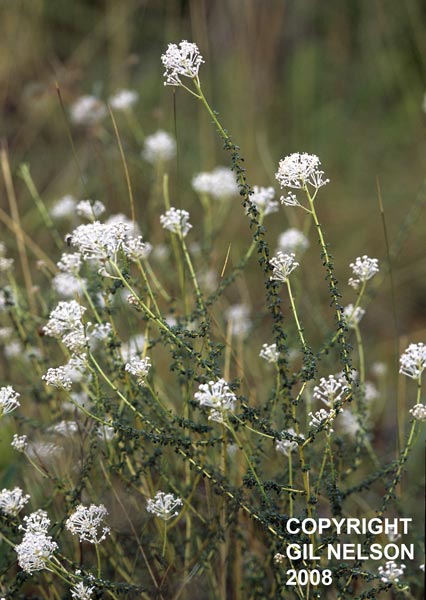Difference between revisions of "Ceanothus microphyllus"
KatieMccoy (talk | contribs) (→Taxonomic notes) |
KatieMccoy (talk | contribs) (→Distribution) |
||
| Line 27: | Line 27: | ||
==Distribution== | ==Distribution== | ||
| + | It is found in Alabama, Georgia, and Florida. It is listed as vulnerable in Alabama and Georgia<ref name="natureserve">[[http://explorer.natureserve.org/servlet/NatureServe?searchName=Ceanothus+microphyllus]]NatureServe. Accessed: April 12, 2016</ref>. | ||
| + | |||
==Ecology== | ==Ecology== | ||
===Habitat===<!--Natural communities, human disturbed habitats, topography, hydrology, soils, light, fire regime requirements for removal of competition, etc.--> | ===Habitat===<!--Natural communities, human disturbed habitats, topography, hydrology, soils, light, fire regime requirements for removal of competition, etc.--> | ||
Revision as of 14:38, 12 April 2016
| Ceanothus microphyllus | |
|---|---|

| |
| Photo by Gil Nelson | |
| Scientific classification | |
| Kingdom: | Plantae |
| Division: | Magnoliophyta - Flowering plants |
| Class: | Magnoliopsida – Dicotyledons |
| Order: | Rhamnales |
| Family: | Rhamnaceae |
| Genus: | Ceanothus |
| Species: | C. microphyllus |
| Binomial name | |
| Ceanothus microphyllus Michx. | |

| |
| Natural range of Ceanothus microphyllus from USDA NRCS Plants Database. | |
Common name: littleleaf buckbrush
Contents
Taxonomic notes
The specific epithet refers to the reduced leaves that are tiny rounded nubs[1].
Description
This species has been observed to have several main branches near the base[2].
Distribution
It is found in Alabama, Georgia, and Florida. It is listed as vulnerable in Alabama and Georgia[3].
Ecology
Habitat
This species has been found in open longleaf pine-wiregrass savannahs, ridges, slopes, and wetlands. It has been observed to grow in well-drained dry loamy sands in the uplands as well as mesic environments. Associated species include Pinus palustris and Aristida stricta[2].
Seed dispersal
According to Kay Kirkman, a plant ecologist, this species disperses by explosion mechanisms or by ants. [4]
Fire ecology
This species occurs in mature longleaf pine communities that are frequently burned (FSU Herbarium).
Conservation and Management
Cultivation and restoration
Photo Gallery
References and notes
Florida State University Robert K. Godfrey Herbarium database. URL: http://herbarium.bio.fsu.edu. Last accessed: June 2014. Collectors: Loran C. Anderson, R. A. Norris, Andre F. Clewell, Robert K. Godfrey, Steve L. Orzell, R. Komarek and Helen Roth. States and Counties: Florida: Gadsden, Liberty, and Wakulla. Georgia: Decatur, Grady, and Thomas.
- ↑ [[1]]. Native Florida Wildflowers. Accessed: April 12, 2016
- ↑ 2.0 2.1 Florida State University Robert K. Godfrey Herbarium database. URL: http://herbarium.bio.fsu.edu. Last accessed: June 2014. Collectors: Loran C. Anderson, R. A. Norris, Andre F. Clewell, Robert K. Godfrey, Steve L. Orzell, R. Komarek and Helen Roth. States and Counties: Florida: Gadsden, Liberty, and Wakulla. Georgia: Decatur, Grady, and Thomas.
- ↑ [[2]]NatureServe. Accessed: April 12, 2016
- ↑ Kay Kirkman, unpublished data, 2015.